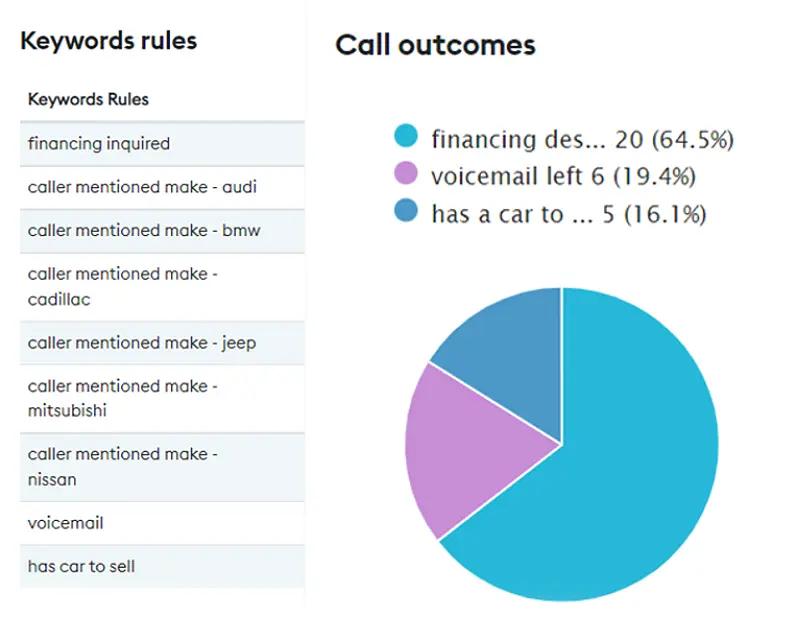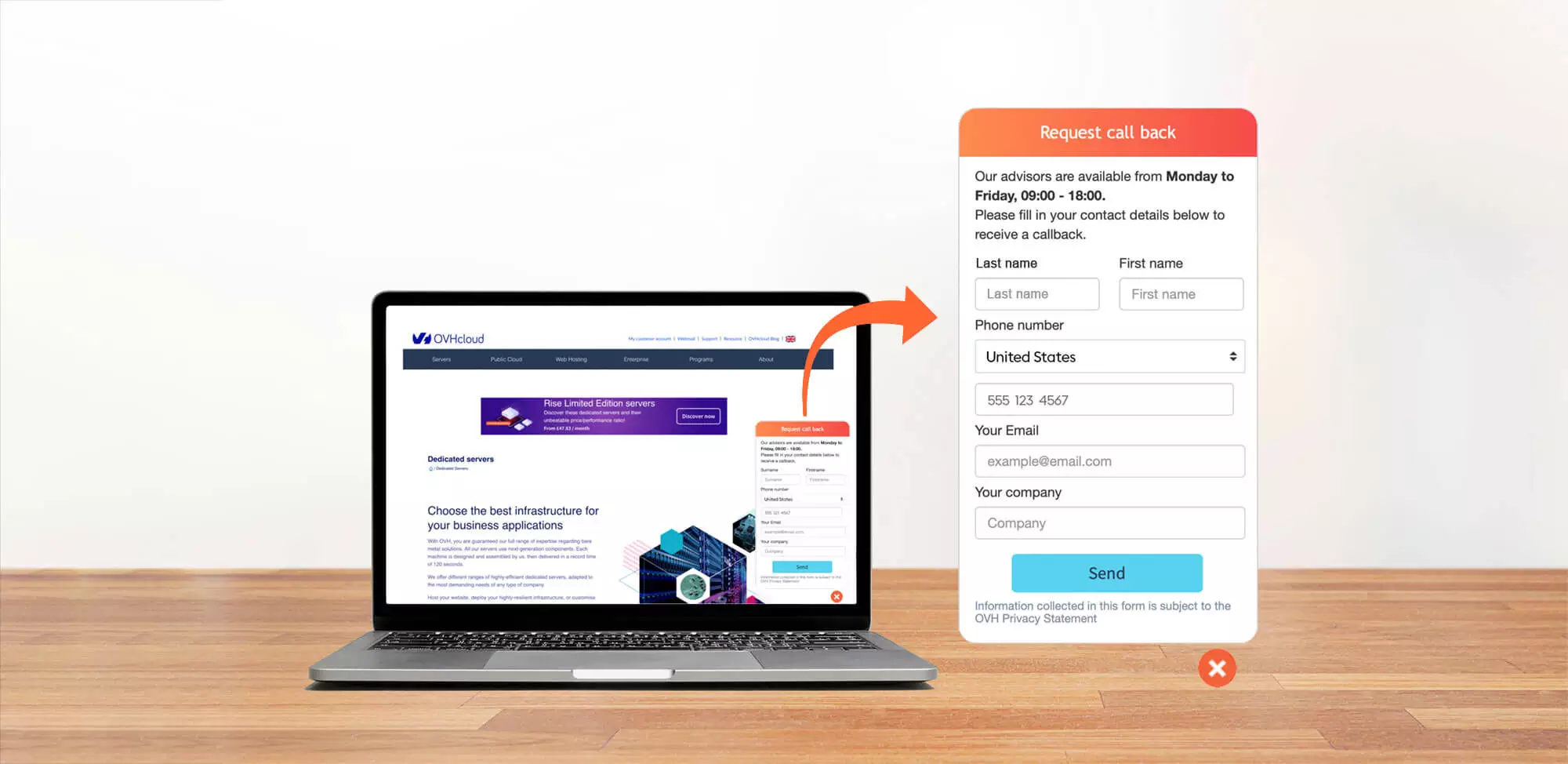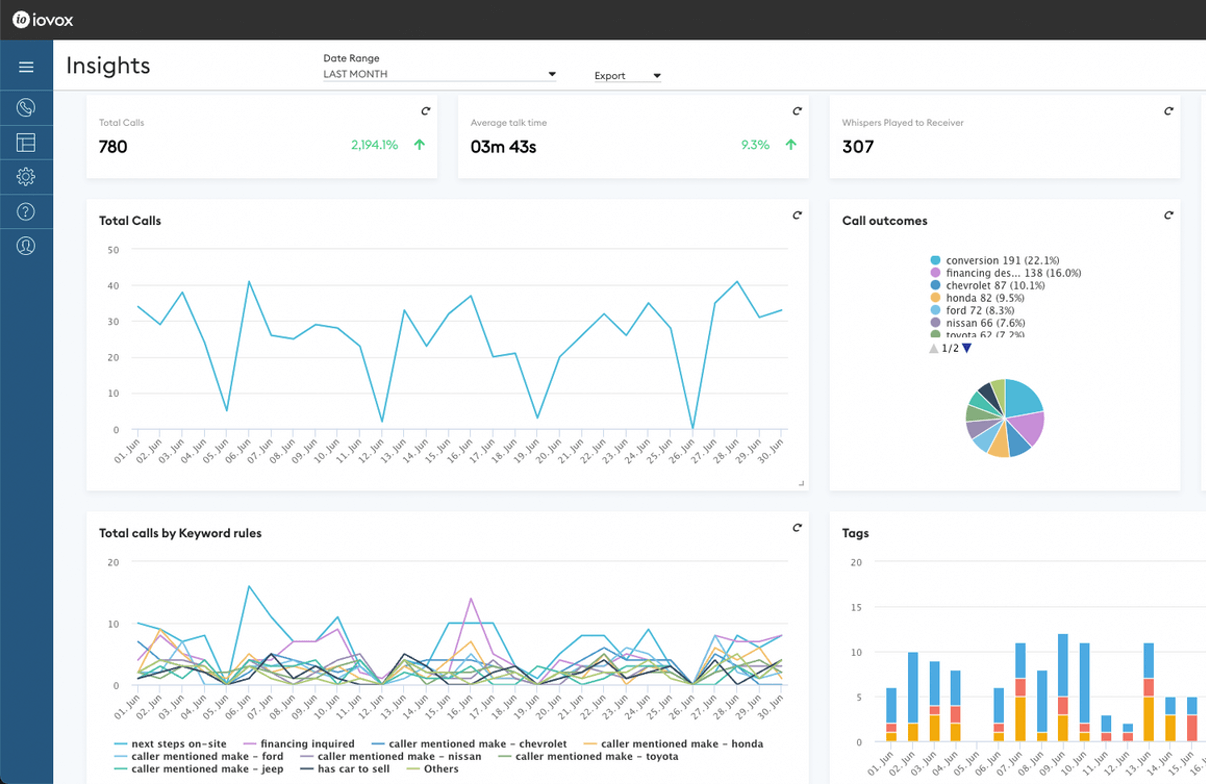Lead Attribution: What It Is + How to Get Started in 2024
lead attribution, conversational intelligence,
Lead attribution shows marketers what works and what doesn’t for getting leads. With this information, you can optimize marketing budgets, improve content and copy, and enhance targeting for better results.
But how exactly does lead attribution work?
More importantly, why should you implement it?
Don’t worry. Our detailed guide explains everything about lead attribution and how it can skyrocket your marketing return on investment (ROI).
Further reading:
- Find out how AI in marketing can boost ROI, personalize your messaging, and greatly improve your team’s efficiency and productivity.
- Discover how conversational AI can track lead interactions, analyze common queries, and provide insights into lead behavior.
This Article Contains:
- What Is Lead Attribution and How Does it Work?
- Why Is Lead Attribution Essential?
- 3 Types of Lead Attribution Reporting Models (+ Use Cases)
- 3 Key Challenges in Lead Attribution Reporting
- 5 Vital Steps for Successfully Implementing Lead Attribution
- How to Choose a Lead Attribution and Management Tool for Your Business
- iovox: Guaranteed Effectiveness in Lead Attribution and Management
Let’s get started.
What Is Lead Attribution and How Does It Work?
Lead attribution involves tracking and crediting marketing touchpoints or sources based on how influential they are in delivering the best leads. These sources include email, social media platforms, online directories, websites, Google or other search engines.
Unlike marketing attribution, which considers the entire customer journey, lead attribution zooms in on a prospect’s actions that result in them becoming a qualified lead.
Some of these actions typically include:
- Filling out your website forms.
- Subscribing to your newsletter.
- Registering for your events, free trials, and webinars.
- Downloading whitepapers, ebooks, brochures, or coupons.
- Requesting demos or calling your sales team for price quotes or additional information.
How Does Lead Attribution Work?
First, you’ll need lead or marketing attribution software like Google Analytics and iovox. These tools help you collect and analyze data on the lead source and conversion.
Here’s an example of an auto insurance customer journey to help understand how these systems work:
- Discovery: A potential customer searches for ‘Best Auto Insurance in Las Vegas’ on Google, sees your Google ad, and clicks on it. They visit your landing page but don’t take additional actions, like using the calculator or clicking on product links.
- Exploration: Later, they see and click on your retargeting ad on an insurance comparison site. This time, they find a product they like, which leads to the next step.
- Action: They enter their car details for a quote. They want more information, so they click the phone number to talk to your insurance expert.
Each interaction and marketing activity here is vital to the conversion journey. However, there are several marketing attribution models to determine the most valuable source of leads. The model you choose determines which interaction gets the credit and how much.
We’ll dive into the different attribution models and credit distribution shortly.
But before that, let’s explore how lead attribution impacts your sales and marketing efforts.
Why Is Lead Attribution Essential?
Here are three reasons why lead attribution is vital for marketing success:
Improved Marketing ROI
By identifying the top-performing lead source, you can direct your marketing investments toward the channels your customers prefer the most.
For instance, iovox Dynamic Numbers can swiftly identify the keywords that drive the most Google ad clicks and conversions. Your sales team can then redirect marketing budgets to these successful keywords to generate more leads, increase the conversion rate, and reduce costs.
Additionally, with iovox’s Conversational AI, you can automatically turn call recordings into text and analyze them to discover trends, opportunities, and outcomes. These insights help you make informed decisions that get you the most out of your marketing budget.

Optimized Resource Allocation
With lead attribution, marketers can quickly identify recurring patterns that consistently generate high-quality leads. You can use this information to prioritize and assign the most suitable salespeople for optimal lead engagement.
For example, you can route calls from your direct mail or email marketing campaign to the best-suited sales agent using iovox Dedicated Numbers.
You can amp up the overall engagement by adding iovox Call Whispers — a pre-recorded message indicating the call source, like the channel, keyword, or marketing campaign, before the agent hears the caller’s voice. Sales agents can use this info in conversations, demonstrating a solid understanding of the lead’s background and needs.
Enhanced Customer Experiences
Lead attribution modeling can help you understand how potential customers interact with your website. With this information, you can eliminate any obstacles in their experience and display your Calls-to-Action (CTAs) exactly where they might expect or want it.
Take iovox WebCallBack as an example. It uses visit patterns and rules to find the best moment to show the lead capture form. This approach improves the user experience and boosts the chances of getting the visitor’s attention when it matters, improving the likelihood of conversion.
But here’s the thing: To make the most of lead attribution models, you must choose the one that aligns with your sales cycle and digital marketing efforts.
Let’s explore these reporting models.
3 Types of Lead Attribution Reporting Models (+ Use Cases)
Not all channels lead to conversions equally.
Some play a bigger role in pushing the customer further down the sales funnel.
Let’s explore each attribution model and their use cases:
First-touch Attribution
The first-touch attribution model fully credits the initial marketing touchpoint or first interaction in the customer journey. This single-touch attribution model is ideal for assessing the impact of specific marketing channels and strategies in creating brand awareness or lead generation.
For example, imagine someone eager to buy a new home.
They see your social media ad discussing the perks of homeownership and check your website for new homes. iovox’s Dynamic Numbers helps marketers track these interactions by assigning a unique tracking number for each lead.
A few days later, they see your social media ad for a new home in their desired neighborhood and call the unique iovox phone number in the ad.
The first-touch attribution model fully credits the social media ad highlighting homeownership benefits in this scenario.
Last-touch Attribution
The last touch attribution model solely credits the final touchpoint before the potential customer converts. You can use this attribution model to understand the impact of specific channels or interactions in capturing qualified leads.
Consider a scenario where you’re promoting a new group health insurance plan for small businesses.
Now imagine a potential customer clicking your ad while searching for the best group health insurance companies on Google. They visit your website or landing page, check out your plan, move to the pricing page, where they compare plans, and then call your sales representative for more info.
According to this model, you assign full credit to the ‘comparing plans’ interaction.
Multi-touch Attribution
The multi-touch attribution model credits various touchpoints and interactions leading to the conversion. It’s ideal for a holistic view of your B2B marketing activities, especially if you have a lengthy sales cycle and complex customer journey.
However, there are several multi-touch attribution models, each with its method of distributing credit to different touchpoints and interactions.
Here’s a quick look at some common multi-touch attribution models:
- Time decay attribution model: Attributes more credit to the touchpoints closer to the conversion.
- Linear attribution model: Assumes equal importance for each touchpoint.
- Position-based or U-shaped attribution model: Assigns a higher value to the first and last touchpoint.
- W-shaped attribution model: Gives the highest credit to the first, midpoint, and last interaction.
Picture this: You connect with a potential customer at a SaaS conference. After exchanging contact information, you follow up with an email highlighting how your product can enhance key business processes.
The lead reads the email and visits your landing page to explore product features, case studies, and customer testimonials. Eventually, they fill out the WebCallBack form to schedule a personalized demo.
Now, the question is, how do you attribute these different interactions?
That depends on your chosen multi-touch attribution model.
For example, the time-decay model gives the highest credit to the customer testimonials on the landing page. The position-based or U-shaped attribution model credits the SaaS conference and webinar interactions equally. And the linear attribution model distributes equal credit across all interactions.
Bottom line: Choose single-touch attribution (like first or last-touch) if you’re looking for something easy to use and understand.
Multi-touch attribution models are more detailed. They use algorithmic attribution models to distribute credit dynamically across various touchpoints. So, you get a deep understanding of your customer’s behavior and preferences.
By now, it’s clear why lead attribution models are crucial for decoding the customer journey.
Yet, reaping its benefits will require overcoming a few challenges first.
3 Key Challenges in Lead Attribution Reporting
Let’s look at some common issues that come up in lead attribution reports:
Multichannel and Cross-Device Tracking
Maintaining data accuracy and consistency with a multi-touch lead or marketing attribution model is hard, especially when consumers shift between devices, use ad blockers or clear cookies.
If the data fails to synchronize seamlessly between devices, you may not be able to accurately track or credit specific interactions, resulting in incomplete insights into the customer journey.
Furthermore, stringent data protection regulations, like GDPR (General Data Protection Regulation) and HIPAA (Health Insurance Portability and Accountability Act), restrict personal data collection, storage, and usage.
Offline and Online Integration
Digital cookies and tracking pixels track online interactions.
But you must input offline interactions, such as conference interactions, manually. This creates data silos where online and offline data are stored separately.
Failure to integrate the data effectively results in incomplete insights into the customer’s behavior and journey.
Lookback Window Limitations
The lookback window is your time frame for tracking and crediting customer interactions. Salespeople use these windows to analyze and report on paid advertising campaigns on Google, Facebook, and LinkedIn.
Short lookback windows (1-7 days) are easy to track and analyze. They work well with a short sales cycle or a time-sensitive promotion. However, you risk excluding the first interactions if the potential customer doesn’t convert within the set time frame.
For example, let’s say your potential customer’s first touchpoint is a social media ad or other content marketing activity. However, nurturing them into a qualified lead takes 15 days. In that case, the attribution excludes the initial marketing efforts they first engaged with.
On the other hand, a long lookback window (30-90 days) may give excessive credit to interactions that are less relevant to the customer’s current decision-making process.
For example, an ad they saw 75 days ago might not have impacted their decision, but because of the long lookback window, it is factored into account.
Luckily, you can overcome most of these challenges by implementing lead attribution models correctly.
So, let’s explore the steps you can take to get the best lead data.
5 Vital Steps for Successfully Implementing Lead Attribution
Consider these five crucial steps when implementing lead attribution:
Clearly Define Goals
Get together with key stakeholders, including marketing, sales, and data analytics, to identify your lead attribution goals.
For example, specify the ideal time frame and the number of leads desired if the objective is lead generation. Most importantly, determine the qualification criteria, including demographics, location, designation, engagement level, or other specific behaviors.
Map the Customer Journey
Create a detailed customer journey map, including every touchpoint or interaction a lead may have with your brand, from awareness to conversion.
This visual guide helps you pinpoint important stages, which makes crediting leads to a specific marketing channel or strategy easier.
Choose the Right Lead Attribution Model
Consider factors such as the complexity of your sales cycle, the typical path to conversion, and your marketing channels and strategies when choosing an attribution model.
If you have a data analysis expert on board, you can develop a custom attribution model based on your business’s unique characteristics.
Train Your Team
Conduct comprehensive training sessions for your marketing, sales, and data analytics teams.
Ensure that team members understand the nuances of the selected attribution model, the importance of accurate data input, and how to leverage attribution insights for strategic decision-making.
Analyze and Optimize
Regularly analyze the lead and revenue attribution data and metrics to gain actionable consumer insights. Look for recurring patterns that can inform strategic decisions.
Use these consumer insights to optimize marketing campaigns, reallocate resources to the best-performing marketing channel, and refine your overall marketing strategy.
Now that you’ve set clear goals and fine-tuned your internal processes, it’s time to pick a marketing automation software for your business.
Let’s dive in.
How to Choose a Lead Attribution and Management Tool for Your Business
Here are some vital points to remember when choosing a lead attribution tool:
- Ensure the tool’s features and lead attribution model capabilities align with your sales processes and marketing objectives.
- Assess the tool’s ability to integrate seamlessly with your existing customer relationship management (CRM) systems.
- Evaluate scalability and customization options for future growth and tailored solutions.
- Factor in upfront and ongoing costs to ensure the tool fits your budget without compromising essential features.
- Confirm that customer support is available during implementation and afterward. Also, ensure they offer relevant training and resources for effectively using the tool.
- Review user testimonials and ratings to gauge the tool’s performance and user satisfaction.
Looking for the ultimate lead attribution and management tool to transform how you track and credit your marketing efforts?
Meet iovox.
Level Up Your Lead Attribution and Management with iovox
iovox is the perfect solution for first-touch, last-touch, and multi-touch attribution. It comes equipped with revolutionary tracking features that:
- Accurately track online and offline customer interactions and lead response times.
- Provide real-time marketing analytics.
- Integrate seamlessly with your existing tech stack.
- Offer comprehensive reporting capabilities.
Let’s explore these features in more detail:
Secure 100% Attribution for Inbound Calls
iovox’s Dedicated Numbers and Dynamic Numbers features are game-changers for businesses engaged in multichannel marketing.
Dedicated Numbers help attribute calls to channels such as online ads and email marketing campaigns. They also capture important details such as status, call length, and caller ID.
You have the flexibility to place these Dedicated Numbers on your listings manually, or you can integrate it with the iovox API for automated and efficient management. Once set up, calls to these Dedicated Numbers are seamlessly forwarded to your designated sales agents.
Dynamic Numbers helps you track calls based on sessions or sources. When a potential customer visits the landing page or website, Dynamic Numbers assigns a unique iovox number to that visitor. This helps identify which channels and keywords generate phone calls, allowing you to confidently redirect marketing spend from underperforming channels.
Capture Lead Data Effortlessly
Timely engagement improves the user experience and boosts the chance of turning visitors into leads. With iovox WebConnect and WebCallBack, potential customers can easily reach out on their terms.
WebConnect is a call button that you add to your website to enable instant conversations with leads. You can choose the pages where you want to include call buttons. When visitors browse your site from any device, they can click or tap the WebConnect button to connect instantly with your sales team.
WebCallBack helps capture leads through web forms when your team is unavailable. To get started, set your availability schedules, customize the design, activate display rules, and integrate our JavaScript tag on your site.

Enhance Lead Response Time and Quality
Promptly responding to newly captured leads allows you to capitalize on their interest while still fresh. Here, iovox Call Rules ensures you keep leads engaged with your brand instead of turning to the competition.
If your sales agent misses an important call, iovox’s Missed Call Alerts promptly sends them SMS or email notifications. Additionally, with the iovox’s API, you can seamlessly integrate data from SMS, email, and live chat channels to track response time beyond calls.
For instance, a lead visits your website and fills out the WebCallBack form. The iovox Lead Response tool keeps their contact details private and sends the info to your sales and marketing team. When your team gets back to the lead through phone, text, or email, you can see how quickly they responded and track further interactions on your dashboard.
Spot Trends and Opportunities With Ease
Identifying trends and opportunities is critical for staying ahead of the curve. That’s where iovox’s Conversational AI works its magic.
Conversational AI allows you to automatically transcribe and analyze thousands of phone calls, helping you identify details like:
- The subject of the call.
- Products or services that interest callers.
- Challenges discussed by callers.
You can customize it by defining specific words or phrases to track. When used with iovox Dedicated or Dynamic Numbers, you get a deep understanding of your customers, uncovering sales opportunities and enhancing their experience.

Wrapping Up
Lead attribution determines the most effective marketing channels and activities for attracting and converting leads. These insights help optimize your marketing ROI, allocate resources effectively, and enhance overall customer experiences.
But to truly reap these benefits, you need a robust lead attribution and management tool like iovox that tracks every lead interaction and the subsequent response times.
So what are you waiting for?
Team up with iovox today and maximize your marketing ROI.
To get in touch, simply click the WebConnect call button on this page. Alternatively, you can email us at hello@iovox.com or give us a call toll-free from within the US at +1 888 369 9519.
From outside the US, please reach us at one of these numbers:
London, UK +44 (0)20 7099 1070
Sydney, Australia +61 (0)2 8520 3530
Paris, France +33 (0)1 84 88 46 40